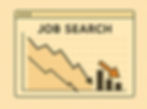Job Market Slowdown? Rethink Hiring in 2025
- Ma
- Jul 25, 2025
- 4 min read

In 2025, Southeast Asia’s job market feels… slow.
Not collapsing — but cautious.
From Malaysia to Singapore and beyond, employers are pulling back. Inflationary pressures, budget reviews, automation rollouts, and global supply chain uncertainty have pushed many companies to freeze headcount, reduce overheads, and rethink expansion plans. But while it might feel safer to hit pause on hiring — especially for SMEs and startups — a blanket freeze can sometimes cost more than it saves.
The truth? You don’t need to freeze. You need to rethink.
As a recruitment agency headquartered in Singapore with active operations in Malaysia, Hey Rocket has helped companies pivot their hiring models without sacrificing performance or agility. Here’s what we’ve learned — and what you can do to adapt smarter in 2025.
Why You Need to Rethink Hiring in 2025
Hiring Freezes Are a Blunt Tool — Here’s Why They Fail
When companies feel pressure, one of the first instincts is to halt new hires. But in many cases, this only solves the symptom — not the real problem.
Let’s say your operations team is underperforming, or your CSAT score is dropping in retail. Halting all hiring sounds practical — but if you’re not replacing leavers or backfilling essential support staff, your remaining team burns out faster, productivity dips, and turnover spikes again.
It becomes a costly cycle.
A 2023 study by the ASEAN+3 Macroeconomic Research Office (AMRO) noted that labour market mismatches in Southeast Asia — where open roles remain unfilled despite available talent — are widening. Freezing headcount might keep your budget tight short-term, but it could increase long-term costs in turnover, rehiring, and lost output.
So What Can You Do Instead? Flexible Hiring Models
Rather than a freeze, many companies are shifting to agile workforce planning — hiring based on current needs, growth potential, and real-time performance indicators. This includes:
1. Project-Based or Contract Hiring
Hiring full-time staff for seasonal peaks or short-term initiatives is risky. Instead, employers are increasingly opting for:
Contract roles (3–6 months)
Freelance specialists for niche projects
Part-time coverage for retail and F&B
This lets you manage fluctuations without bloating payroll.
At HeyRocket, we support this through flexible staffing models, helping employers find quality candidates across job types — from junior roles to team leads — without the long-term commitment.
2. Temp-to-Perm Strategies
Don’t know if a role is essential long-term? Start with a temp-to-perm model. It allows you to test-fit a candidate for 3–6 months and confirm value before converting them to full-time.
This strategy is ideal for:
Newly created roles
Expansion into new regions
Testing junior leadership hires
And it works both ways — candidates are also evaluating you. Temp-to-perm hiring increases alignment, reduces early attrition, and builds trust.
3. Outsourcing Operational Roles to Recruitment Experts
Many HR teams are overwhelmed — managing job ads, interviews, admin, onboarding — especially when budgets are shrinking but expectations aren’t.
That’s where recruitment agencies like Hey Rocket can step in. We’re not just sourcing resumes — we’re:
Screening for long-term fit
Managing walk-in interviews (mass hiring)
Prepping candidates for smoother onboarding
Tracking drop-off and ghosting risk
Offering payroll, contract handling, and work pass compliance (especially for foreign hires)
Explore our services for employers to see how we simplify recruitment operations.
Rethink Who You’re Hiring — Not Just How
During slowdowns, not all roles need to go on hold. Instead, review where hiring delivers immediate impact.
Revenue-Critical Roles
Focus on positions that directly influence output — like sales, delivery, or technical support. These roles help you stay profitable and responsive, even in slower quarters.
Hybrid Roles
Look for candidates who bring cross-functional value — e.g., a marketing exec with project management skills or a customer service agent who can support admin workflows.
Internal Mobility
Sometimes, the best hire is already on your team. Promote. Rotate. Cross-train. Companies that invest in internal growth during downturns emerge more resilient and with higher retention.
Training as an Alternative to Hiring
You don’t always need to replace a skill gap with a new hire. Upskilling your current team can:
Increase retention (people stay where they grow)
Reduce recruitment costs
Future-proof your workforce
Governments across SEA, including Singapore and Malaysia, are also supporting this — with grants for skills development and mid-career support.
If you’re unsure whether to hire or train, speak to our team about talent advisory. We can help you assess team gaps and plan accordingly.
Rethinking Doesn’t Mean Retreating
Hiring during a market slowdown isn’t reckless — it’s strategic. The companies that emerge stronger in 2026 will be those that used 2025 to:
Audit their hiring strategy
Trim the fat, not the function
Build better pipelines
Work with partners who understand the local market
That’s what we do at Hey Rocket.
As a Southeast Asia-based recruitment agency with deep roots in both Singapore and Malaysia, we’ve helped companies scale smartly — even when the economy wasn’t kind.
Need to rethink your hiring strategy for 2025?Let’s talk about how Hey Rocket can help you stay lean, compliant, and future-ready.👉 Explore our services
TLDR
Don’t default to hiring freezes.
Use temp, contract, or temp-to-perm models to stay agile.
Prioritise critical roles — not all headcount delivers equal value.
Explore agency partnerships to reduce internal load and increase candidate quality.
Train internally where possible — it’s cheaper and builds loyalty.
Sources: